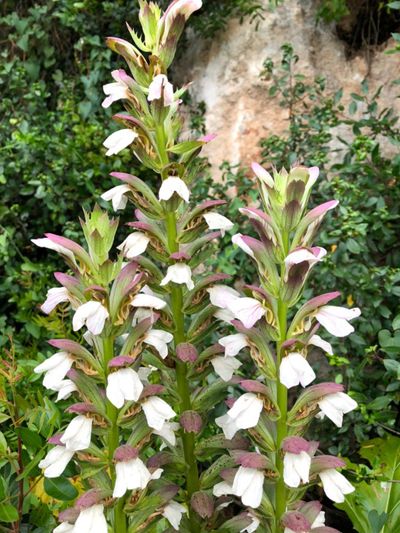Bear’s Breeches Plant Info
The leaves of the Bear’s Breeches plant were used extensively in Greek and Roman art and, therefore, give off a distinct classical air. They were perhaps most famously recreated in stone as decoration on the top of Corinthian columns. On top of the familiar shiny green leaves, Bear’s Breeches produces a striking 3 foot (1 m.) tall spire of white to pink snapdragon-like flowers, topped by purple sheathes.
Care of Acanthus Bear’s Breeches
The wisdom of growing Acanthus plants in your garden depends upon how cold your winters get. The plant will spread via underground runners, and in areas with yearlong warmth similar to its native Mediterranean climate, it may very well take over your garden. In climates with a colder winter, it will most likely be kept in check. It will keep its leaves in areas as cold as USDA zone 7. It will lose leaves but survive the winter in zones as low as 5 if it is mulched. Acanthus plant care is fairly easy. It will tolerate virtually any soil type as long as it’s well drained. When it comes to light, the plant prefers partial shade. It can handle full shade, though it may not flower as well. It does need frequent watering and will wilt very dramatically if it dries out. Remove the flower stalk after the plants have finished blooming for the year. You can propagate Acanthus Bear’s Breeches by taking root cuttings early in the spring. For the most part, Bear’s Breeches does not suffer much pest or disease issues. That being said, on occasion, slugs or snails may visit the plant to feed on its foliage. For this reason, you may want to keep an eye on these potential threats and treat as needed.
